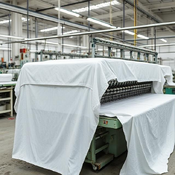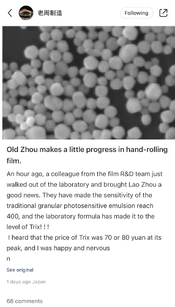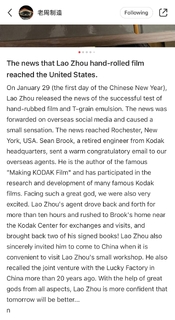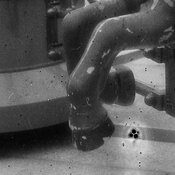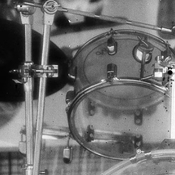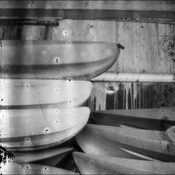Again, even as you mention, that is very different from manufacturing film, but in that area LLL does seems to have proven themselves very advanced!
I don't doubt the fact that LLL is presently capable of manufacturing some things to a very high level of quality, going by what I can read/see online. I've not visited their premises, I don't know what kind of competence they have, how their sourcing, R&D and manufacturing are organized, etc. But there's still that very important issue that manufacturing film and manufacturing lens assemblies and/or lens parts is just a very different ballgame. Noting the relevance of being 'advanced' suggests that it's a quantitative thing - that any organization that's good at one thing should automatically be good at another. This, of course, is not the case.
So, I haven't heard of people making photographic film as a startup or as hobbyists
Because it's bloody damn difficult to do.
What separates the simplest B&W films sold now to the most complex amateur emulsions? Quality control? Arcane sensitizers?
Film manufacturing involves solving hundreds or thousands of 'small' issues that all translate into the final product and affect overall quality in myriad ways. Solving those issues requires fundamental knowledge in a variety of fields under the larger domains of physics, chemistry and control systems. Not only that, it requires the competence of applying that knowledge to industrial solutions in a dependable as well as economically sensible way. Mentioning things like QC and sensitizers is a bit like scratching the surface on the very tip of an iceberg. There's a while universe of complexity hiding underneath it. It's really a daunting task.
Btw, there are/have been some people who have done some basic film manufacturing in attics/basements. Ron Mowrey/Photo Engineer comes to mind; of course, it helped that he had good contacts with (ex-)Kodak employees and had worked there for decades, so he had a good idea of how to work around or prevent a range of problems. Another example is Jim Browning who at one point made
his own matrix film for dye transfer - this is in fact a very rudimentary product, but the coating challenges are a step in the direction of coating a real film product. In both cases, the gentlemen used relatively simple, custom-made coaters that would only work with very small batches and could only coat surface areas that would not make much sense for industrial-scale production of film. For the latter, you'd have to substantially increase batch sizes, which means you'll effectively be working on a roll-to-roll basis, which means all the challenges related to synchronized production steps at high speed need to be solved. If you've ever set foot in a commercial film or paper coating plant, you'll understand the degree of complexity involved. Again, it's a universe of complexity.
I imagine it still isn't as simple as "passable emulsion + acquired film coating infrastructure = new film business"?
Indeed. For starters, how do you acquire something like this? The only examples 'alive' are highly specialized, custom-made production systems involving dozens of purpose-engineered and built machines. In most cases these are so tightly integrated with the building they sit in and the ground this is all built on that even if you were to take an existing film coating production system, you couldn't just pick it up and place it somewhere else. You'd be effectively rebuilding a very complex mechatronics factory. This kind of infrastructure is a bespoke solution; even if you manage to salvage/scavenge a few critical parts from an existing/decommissioned plant, the task of implementing those into a new production line are pretty phenomenal.
Then there's of course the whole business around it; being a successful manufacturer involves more than a product and a production system. The product needs to be packaged, shipped out, there needs to be a QC system built around it, choices w.r.t. to R&D and NPD need to be made and financed so there need to be product and technology roadmaps, there'll have to be maintenance and repairs, marketing & sales need to ensure the right products are selected for manufacture at the right quantities and the right price, supply chain partners both upstream and downstream need to be managed, there needs to be a sourcing & purchasing function for all the stuff that's needed, then you have your basic corporate infrastructure like HR, Finance etc. Of course, some of the generic parts LLL probably has in place in some form for their present activities, but a lot of what I mention (which is not an exhaustive list) is very specific to the product and market, and film is really a different product for a different market than lenses.
So when a newcomer in the field, which moreover is a small market with very high barriers to entry, announces they're going to handle all this within the timeframe of a couple of months - of course this raises questions and makes people very curious as to how things will develop.











